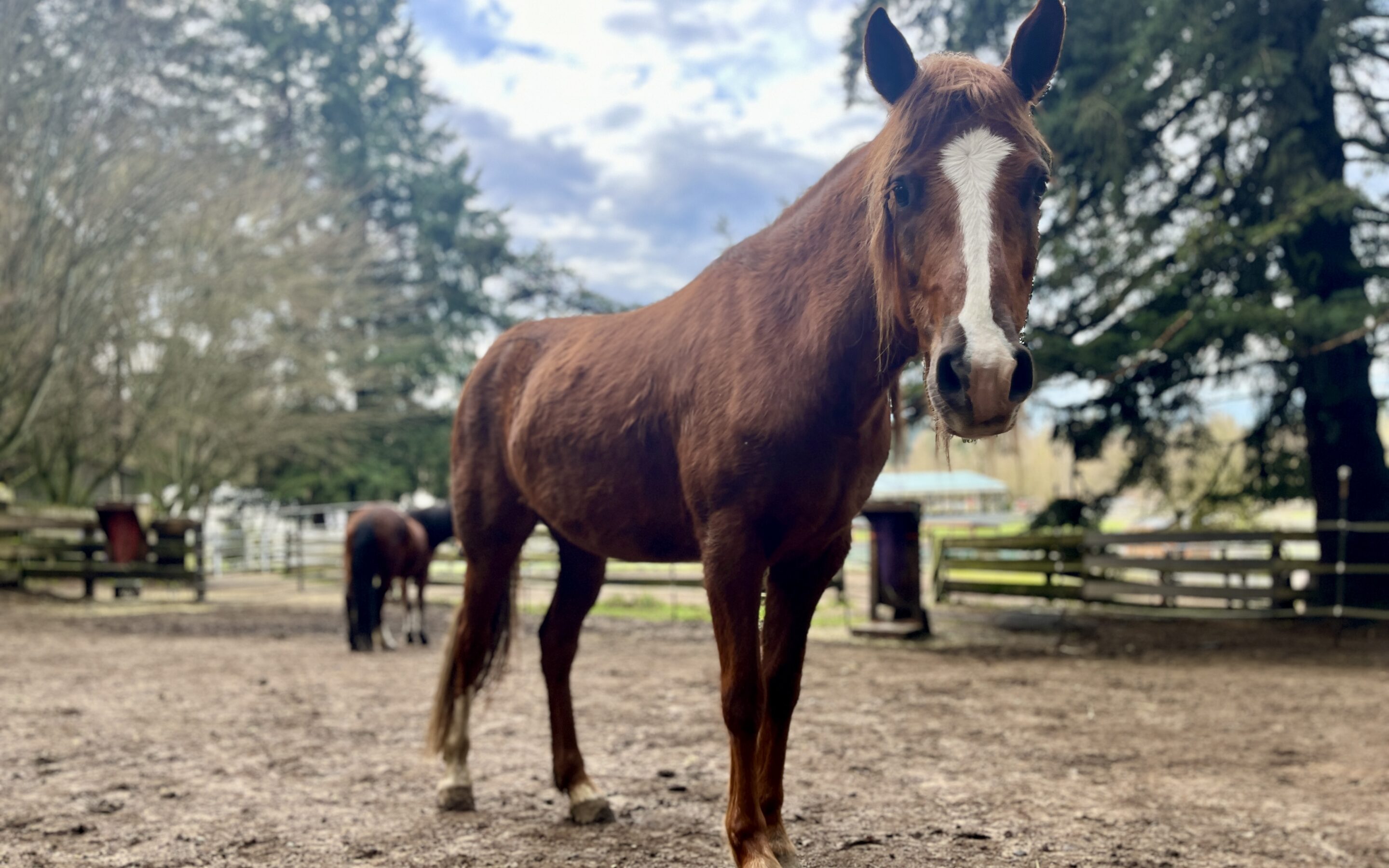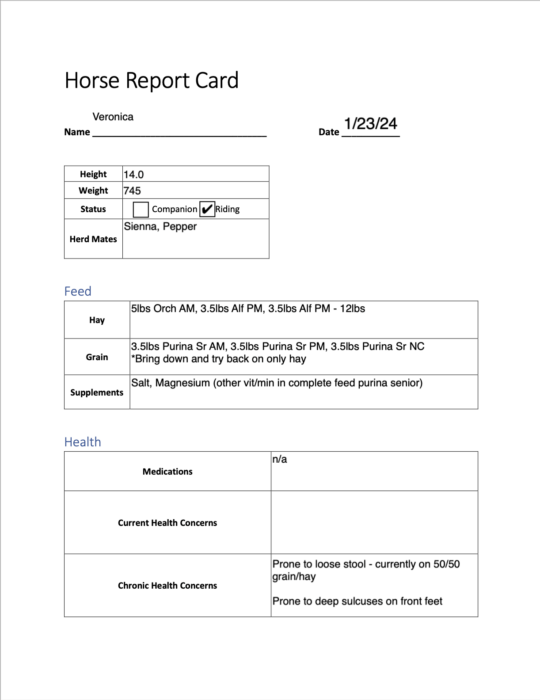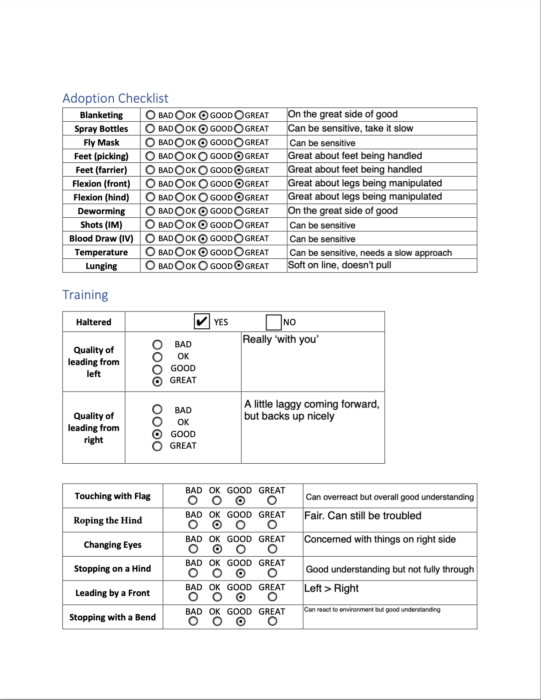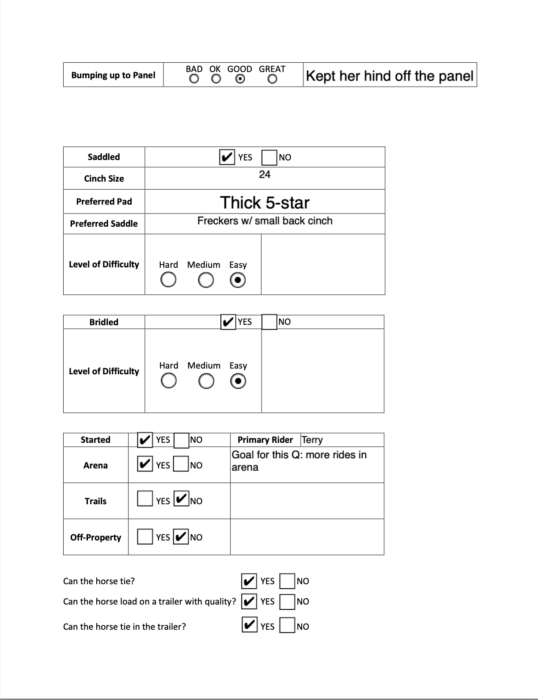Beginning this year, we have developed and implemented a horse ‘report card’ to be able to chart how a horse is progressing with their training, be it on the ground or under saddle. The intention is to check in with each member of the herd on a quarterly basis in an in-depth way. While we interact with all of our horses to some degree on the daily — from grooming to riding and all the ways in between — there are certain boxes that are often left unchecked until the need arises. Sure, that horse is great for saddling, but can you temp them? Yes, they’re good when you pick their feet, but do they behave for longer holding periods with the farrier? All of this information helps us track where the horse is at so we know how best to represent them to adopters, if they’re at that level, and lets us know where their training needs the most attention. It is also a time to set goals for the next quarter, and get a baseline for a horse to evaluate their rate of change.
Here you can see the first draft of this report card and part of the review process for Veronica, one of the first horses we evaluated.
Health & Feeding:
- Veronica was looking a little slimmer than we wanted as we headed into winter, so we upped her feed. She’s at a good weight now (if anything, looking a little bit crestier than we’d like) so we’ll lower her back down to about 1.5–2% of her body weight.
- Veronica has historically struggled with loose stool. November 2023, we started her on a 50/50 grain-hay diet, which our vets recommend for horses with diarrhea when other options are not showing results. Since the diet change, she has been doing great.
- Veronica’s feet need a bit more careful management than some others. She has had a deep central sulcus in the past. We treat for this using Artimud in her sulcus / collateral grooves to help combat thrush, and when they have been especially deep have packed them with ‘Hoof Stuff.’
Additional notes:
Veronica is a sensitive mare, needs more support than some. She is aware of environmental changes and potentially reactive to new environmental factors.
- You have to establish understanding of what the flag (or stimulus) means, but once it is established then she gets it.
- This establishment has to happen at the beginning of each new session. The time it takes for her to gain understanding is typically not long, but she does need a reminder each time.
- Ready to leave once stopped on the hind. Won’t just stand, feels the need to move off.
- When she gets troubled, she wants to put you back on the left eye, doesn’t like you on the right.
- A little bit of a spot in under her chin that might be related to a lingering fear of things in her blind spot — leading by a front is hindered by this, mostly just on the right.
- Misinterprets stimulus — things waving behind her while driving can bother her. Still needs work with changing eyes.
- Doesn’t quite pet to a stop yet, slows but doesn’t fully stop. Likely better in more constant work.
- Sensitive under saddle like she is on the ground — lively and ready to go.





